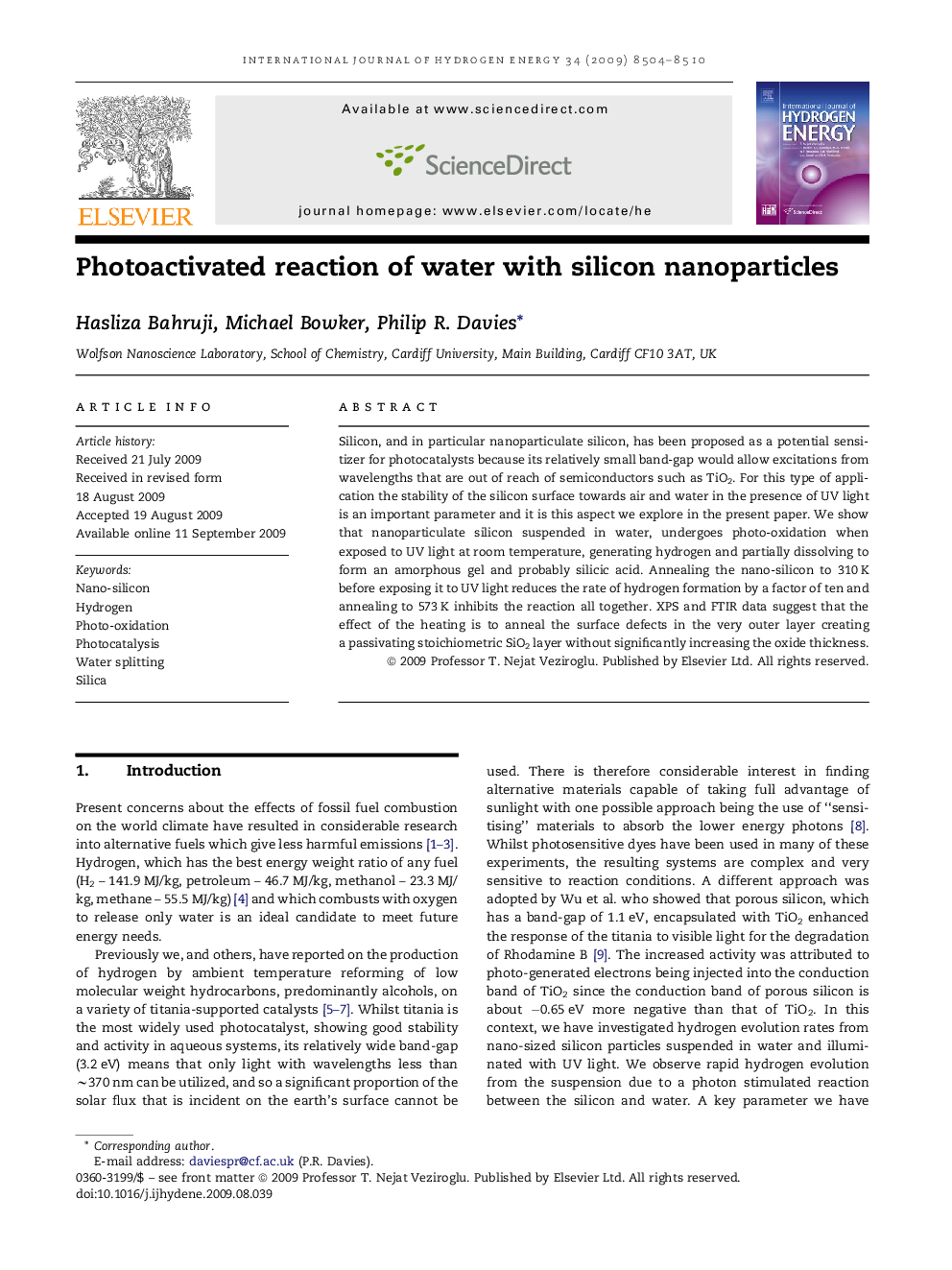| Article ID | Journal | Published Year | Pages | File Type |
|---|---|---|---|---|
| 1278426 | International Journal of Hydrogen Energy | 2009 | 7 Pages |
Silicon, and in particular nanoparticulate silicon, has been proposed as a potential sensitizer for photocatalysts because its relatively small band-gap would allow excitations from wavelengths that are out of reach of semiconductors such as TiO2. For this type of application the stability of the silicon surface towards air and water in the presence of UV light is an important parameter and it is this aspect we explore in the present paper. We show that nanoparticulate silicon suspended in water, undergoes photo-oxidation when exposed to UV light at room temperature, generating hydrogen and partially dissolving to form an amorphous gel and probably silicic acid. Annealing the nano-silicon to 310 K before exposing it to UV light reduces the rate of hydrogen formation by a factor of ten and annealing to 573 K inhibits the reaction all together. XPS and FTIR data suggest that the effect of the heating is to anneal the surface defects in the very outer layer creating a passivating stoichiometric SiO2 layer without significantly increasing the oxide thickness.
